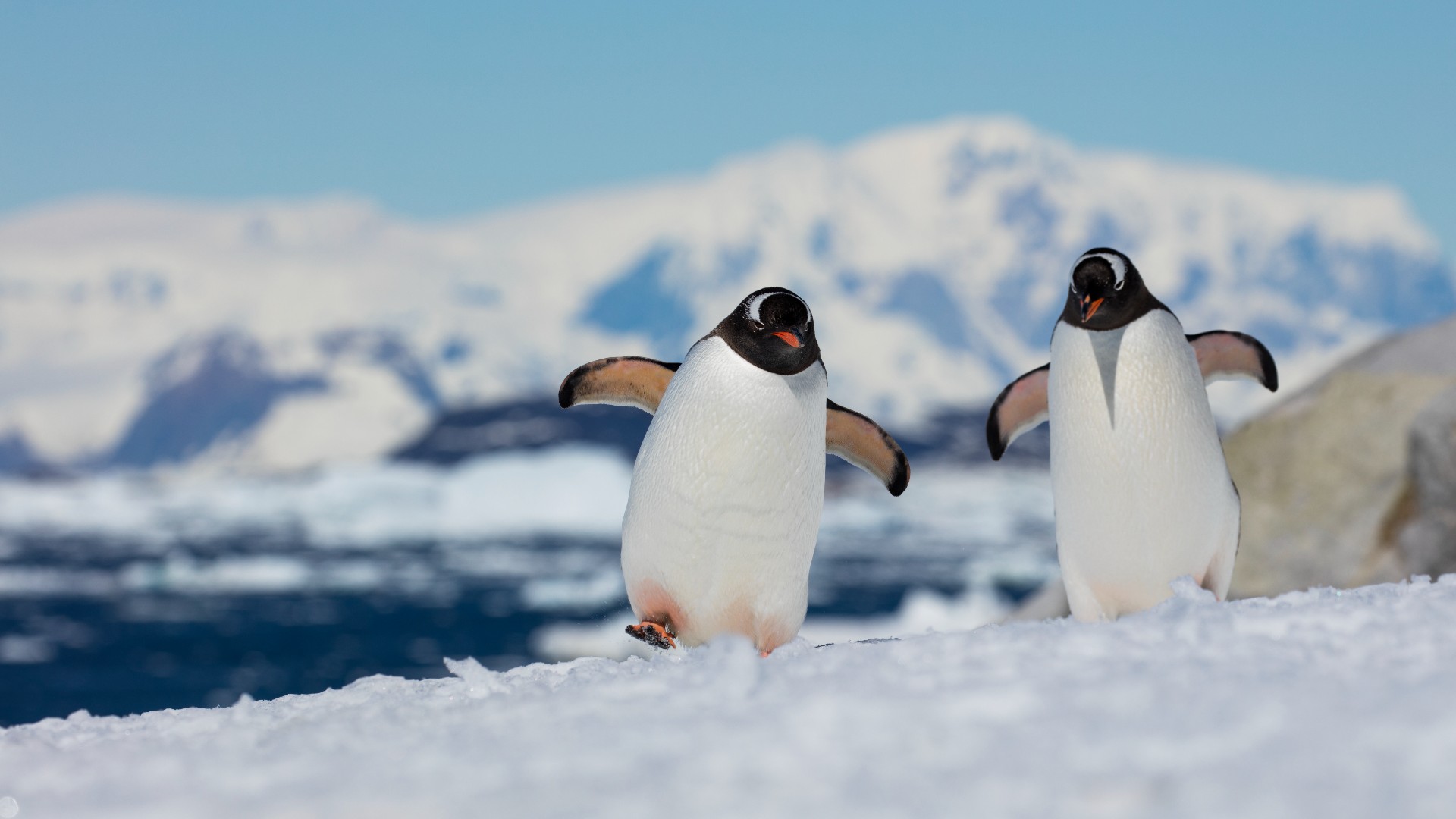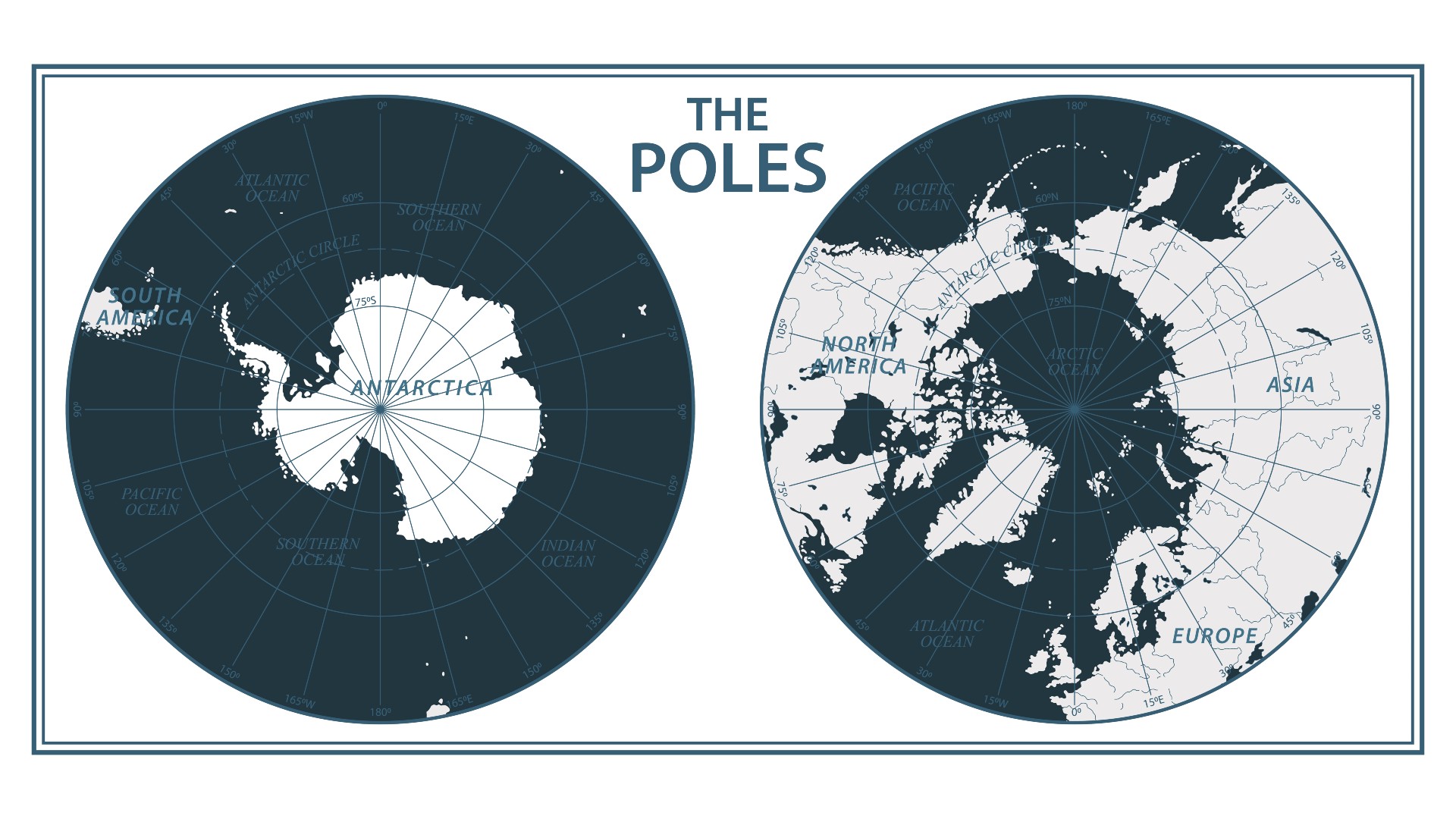
Which is colder: The North or South Pole?
Both are downright chilly, but which wins the prize?

The North Pole and South Pole are the coldest places on Earth. However, as similar as these areas might seem, one is far icier than the other.
So, which pole is colder?
Both the North Pole and South Pole are cold because their positions at the top and bottom of the planet mean they do not get any direct light from the sun. At both places, the sun always rests low on the horizon, even in the middle of their summers. During their winters, the sun lies so far below the horizon, it does not come up for months at a time.
In addition, the white surfaces of the ice and snow at the poles are highly reflective. This means that most of the energy from the sunlight that reaches them bounces back into space, keeping the air above those surfaces relatively cool.
Related: Why aren't there polar bears in Antarctica?
Although these factors make both poles downright chilly, the South Pole remains significantly colder than the North Pole, according to the Woods Hole Oceanographic Institution. The annual average temperature at the North Pole is minus 40 degrees Fahrenheit (minus 40 degrees Celsius) in winter and 32 F (0 C) in summer. In contrast, the South Pole's averages are far frostier, with an annual average temperature of minus 76 F (minus 60 C) in winter and minus 18 F (minus 28.2 C) in summer.
Arctic vs. Antarctic
The main reason the South Pole is colder than the North Pole lies in the key difference between them. "The North Pole is an ocean and the South Pole is a continent," Robin Bell, a polar scientist at Columbia University's Lamont-Doherty Earth Observatory in New York, told Live Science.
Sign up for the Live Science daily newsletter now
Get the world’s most fascinating discoveries delivered straight to your inbox.
The Arctic is an ocean surrounded by land. The Antarctic is land surrounded by ocean. Water cools and warms more slowly than land, resulting in fewer extremes of temperature. Even when the Arctic Ocean is covered with ice, the relatively warm temperature of its waters has a moderating effect on the climate there, helping the Arctic stay warmer than the Antarctic.
In addition, whereas the Arctic lies at sea level, Antarctica is the highest continent, with an average elevation of about 7,500 feet (2,300 meters). The higher one goes, the colder it gets.
Which pole has more ice?

At both the North and South Poles, the ice cover varies over the course of the year, growing in the long, dark winters and melting in the bright, increasingly hot summers.
Most of this variation in ice cover at both the North and South Poles is due to sea ice that floats, grows and melts over the ocean. Since the Arctic is almost completely surrounded by land, the sea ice that forms there is not as mobile as the sea ice in the Antarctic. As such, Arctic sea ice floes are more likely to converge, typically making Arctic sea ice thicker at about 6 to 9 feet (2 to 3 m) thick compared with Antarctic sea ice, which is about 3 to 6 feet (1 to 2 m) thick, according to the National Snow & Ice Data Center (NSIDC).
On average, Arctic sea ice reaches a minimum extent of about 2.5 million square miles (6.5 million square km) and a maximum extent of 6 million square miles (15.6 million square km), the NSIDC said. In comparison, on average, Antarctic sea ice has a smaller minimum extent of 1.2 million square miles (3.1 million square km) and a larger maximum extent of 7.2 million square miles (18.8 million square km).
Related: What is the coldest city in the world?
Still, on average, there is no doubt the South Pole possesses more total ice than the North Pole. This is because the South Pole is home to land ice in addition to its sea ice — the ice sheet on Antarctica is up to 3 miles (4.8 km) thick and covers about 5.3 million square miles (13.7 million square km), about the area of the contiguous United States and Mexico combined, according to the National Science Foundation. All in all, Antarctica holds about 90% of all the world's ice.
"The volume and mass of ice on the land changes little in the summer as a fraction of the amount in winter because the volume and mass are so large," said Cecilia Bitz, a polar climate scientist at the University of Washington in Seattle.
Investigations into the amount of ice at the poles have revealed that both the thickness and extent of Arctic summer sea ice have dramatically declined over the past 30 years. This is consistent with observations of a warming Arctic.
"Arctic and Greenland ice is decreasing rapidly primarily because of global warming," Bitz told Live Science "And decreasing Arctic sea ice area tends to cause even more warming, amplifying the warming that starts the ice loss."
In contrast, "sea ice loss around Antarctica and glacial land ice loss on Antarctica have had mixed changes, ups and downs, over the last 40 years when we've had reasonably good records," Bitz noted. "Antarctic climate dynamics are more complicated because air and ocean circulation are very important factors there."
Originally published on Live Science.











